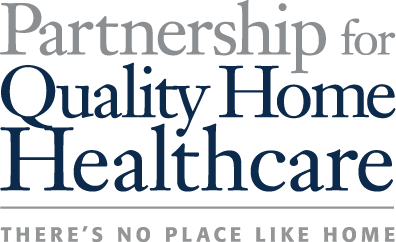May 22, 2013
Ways & Means Puts Home Health Copay On List Of 3 Medicare Cost-Sharing Ideas
Posted in: News
Inside Health Policy
Charging seniors a home health copay made the list of three Medicare reforms that House Ways and Means health subcommittee Republicans chose to discuss at a hearing on Tuesday (May 21), as the home health industry engages in an aggressive campaign against such copays with the help of former Louisiana Republican House Energy and Commerce Chair Billy Tauzin as their lobbyist. On the day of the hearing, the industry released a study by Avalere Health highlighting the potential impact of a copay on seniors who use home health services, which are some of the most vulnerable beneficiaries.
Subcommittee Chair Kevin Brady (R-TX) opened the hearing by listing three Medicare reform policies that both Republicans and the president have proposed: increasing income-related premiums for Medicare Parts B & D, increasing the annual Medicare Part B deductible and establishing a home health copay.
Brady said he chose those reforms for further discussion because they affect beneficiaries and were included in the president’s proposed 2014 budget. But ranking subcommittee Democrat Jim McDermott (WA) complained that the proposals are not bipartisan because Republicans “cherry picked” them from the president’s broader budget, which was intended to be a grand bargain.
However, those were not the only proposals affecting beneficiaries from the president’s budget that Republicans also have proposed. The president’s budget called for increasing the cost of Medigap policies by imposing a surcharge on Part B premiums for people who purchase Medigap policies with low cost-sharing. This surcharge would be equivalent to about 15 percent of the average Medigap premium, which is about 30 percent of the Part B premium. Restricting first-dollar coverage came up at an earlier hearing on the annual report from the Medicare Payment Advisory Commission.
The hearing on Tuesday was the first in a series and other bipartisan ideas, including the president’s Medigap proposal and proposals from bipartisan think tanks, will also be discussed, a committee spokesperson said.
Home health is one of the few benefits for which there is no copay and it’s a rapidly growing sector. Congress passed a home health copay, then quickly repealed it in 1972 because of concerns that it would discourage seniors from getting care at home and lead to more seniors being institutionalized, Medicare Rights Center President Joe Baker told the subcommittee. However, some policy makers, including MedPAC, believe the benefit is abused because seniors pay nothing for it and they believe a modest copay would make seniors think twice about using a service they might not need.
President Obama’s budget would require new Medicare beneficiaries to pay $100 for five or more home visits, if beneficiaries are not first cared for in a hospital or other medical facility.
But the home health industry argues that $100 is a major financial burden for many beneficiaries. Avalere’s analysis found that nearly 73 percent of home health users without supplemental insurance coverage to help cover the copay cost, and who are not dual eligibles, have incomes less than 200 percent of poverty. The copay would shift costs to Medicaid in some states, and more patients could end up in the hospital or other facilities that cost more than caring for people at home, the study concluded.
Avalere cited research showing that when Medicare Advantage plans raised
co-pays for outpatient services, they had 19.8 fewer annual outpatient visits per 100 enrollees, but 2.2 more beneficiaries in those plans were hospitalized, and the cost of the resulting 13.4 additional inpatient days were greater than savings from fewer outpatient services.
The Partnership for Quality Home Healthcare is proposing two fraud-fighting measures in place of copays. One would cap payment at a per-provider average of 2.7 therapy episodes per beneficiary for non-rural providers and at 3.3 episodes per beneficiary for rural providers. The Partnership last estimated this measure would save Medicare $13.8 billion over 10 years.
The second industry proposal would incorporate a minimum annual low utilization payment adjustment (LUPA) rate of 5 percent for all episode payments, which the group last estimated would save $1.4 billion. However, industry is now calling those measures “safeguards” instead of “caps” to avoid leading policymakers to believe that beneficiaries would be discharged once they receive the maximum number of episodes. Unlike a therapy cap, these are aggregate annual averages on a per-provider basis.
See the original article here.
